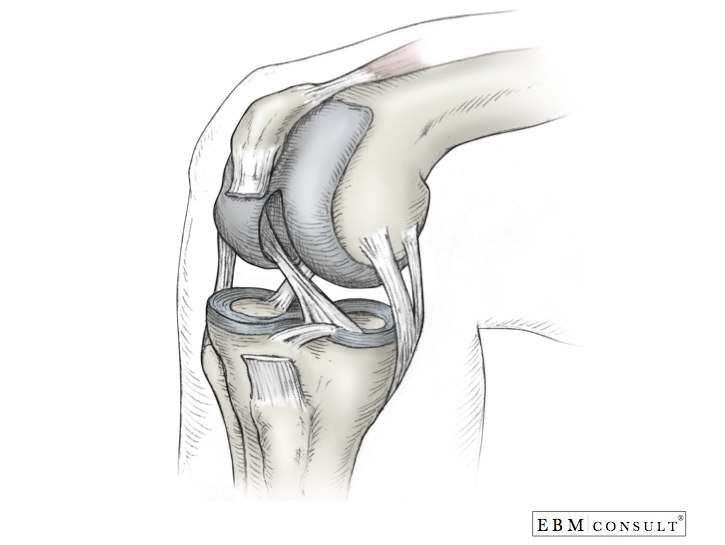Knee Anatomy
|
|---|
- Largest and most superficial joint in our body
- It is primarily a hinge type joint that allows for flexion and limited extension
- There is limited rotation about a vertical axis
- Hyperextension of the knee results in injury
- The knee joint is relatively weak due to incongruence of the articular surfaces
- The strength is determined by the surrounding muscles, tendons and the ligaments that connect the femur and tibia
- The most important muscle that stabilizes the knee is the quadriceps femoris
- The most stable position for the knee is in the erect, extended position
- External Ligaments
- Medial Collateral Ligament (MCL; also called, tibial collateral ligament)
- Extends from the medial epicondyle of the femur to the superior aspect of the medial surface of the tibia
- At its midpoint it is attached to the medial meniscus
- Lateral Collateral Ligament (LCL; also called fibular collateral ligament)
- It extends from the lateral epicondyle of the femur to the lateral surface of the fibular head
- Patellar Ligament
- Distal portion of the quadriceps tendon
- Joins the patella with the tibial tuberosity
- Internal Ligaments (Cruciate Ligaments)
- General Notes:
- These ligaments cross each other obliquely in the center of the joint and help to maintain the contact between the femur and tibial articular surfaces during flexion of the knee
- During medial rotation of the tibia on the femur, the cruciate ligaments wind on each other limiting the medial rotation to 10 degrees
- During lateral rotation of the tibia on the femur, the cruciate ligaments become "unwound" and allow for greater lateral rotation (up to 60 degrees when the knee is flexed at 90 degrees)
- Anterior Cruciate Ligament (ACL)
- Weakest of the two ligaments and has a poor blood supply
- Arises from the anterior area of the tibia, but just posterior to the medial meniscus and extends posteriorly, superiorly and laterally to the lateral femoral condyle
- Prevents both posterior displacement of the femur with hyperextension of the knee joint and limits posterior rolling of the femoral condyles on the tibial plateau during flexion
- Posterior Cruciate Ligament (PCL)
- Strongest of the two ligaments
- Arises from the posterior aspect of the tibia and extends superiorly and anteriorly to the attached to the medial condyle of the femur
- Prevents anterior displacement of the femur with hyperextension of the knee and anterior rolling of the femoral condyles on the tibial plateau during extension
- General Information:
- Fibrocartilage on the articular surfaces of the tibia that facilitates shock absorption
- They are thicker at the external margin and thinner at the inner margins
- Lateral Meniscus
- Medial Meniscus
General Information
Ligaments
Menisci


